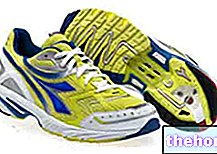The choice of the running shoe requires an accurate knowledge of the models and of all the categories currently on the market. The choice is most affected by:
1. Any problems with the support of the foot; in particular there are:
- Pronator subjects (Hyperpronators): with the heel on the ground, the medial arch is close to the ground (the shoes wear more on the inside)
- Supinators (Hypopronators): with the heel on the ground, the medial arch is lifted off the ground (shoes wear more on the outside)
2. Posture
3. Weight
4. Distance traveled
5. Travel speed6. Type of use (race or training, track or asphalt, dirt ...)

Let's see in detail these categories of running shoes:
A0 = minimalist
A1 = super light
A2 = intermediate
A3 = maximum cushioning (neutral)
A4 = stable
A5 = trial running




























